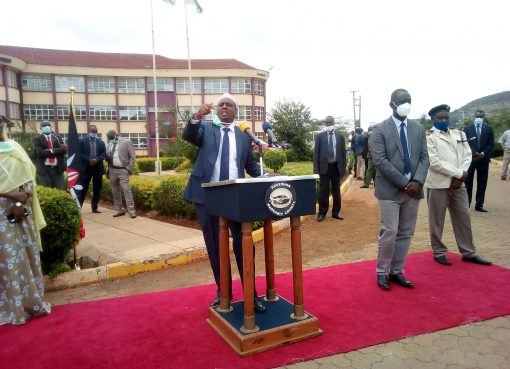The County Government of Turkana has opted for a research-based approach to address perennial water supply interruptions in Lodwar Town, through building of climate-resilient systems, reducing water access inequalities and strengthening institutions for water security.
The findings of the UNICEF-sponsored research program dubbed REACH, which was jointly conducted by the University of Nairobi and University of Oxford and focused on the Lodwar Alluvial aquifer system revealed funding gaps as a key ingredient in improving water supply for the fast growing Lodwar Municipality and upcoming urban centers.
Speaking in Lodwar on Tuesday when he presided over the meeting attended by a team of researchers and senior county officials, to present the research finding, Turkana Deputy Governor Peter Lotethiro lauded UNICEF for supporting the research, adding that the County was moving forward towards the use of evidence approach to ensure Lodwar Town becomes water-secure in the shortest time possible before scaling the same interventions to other parts of the County.
“The research has provided sufficient data in respect to quality, quantity, and susceptibility to climate change in the Napuu aquifer through an observatory mechanism that has been in operation for the last five years,” Lotethiro said.
Turkana CEC for Water Services, Vincent Palor welcomed the findings and said that a preliminary review had shown that the suggested solutions were within the reach of the County Government and its partners to address.
Palor pointed out that the research was prompted by the need to find a lasting solution to the water supply interruptions bearing in mind the increasing demand for water arising from urbanization, mega projects like LAPSSET and the ballooning population.
Lead researcher in the program, Prof Daniel Olago said that the alluvial aquifer system from which Lodwar was sourcing its water had up to 1.3 billion cubic meters of water most of which were vulnerable to pollution due to sedimentation of grit and Holocene.
Prof Olago further noted that the aquifer had a robust recharge mechanism through diffusion from River Turkwel, floods and direct infiltration during the short and long rainfall seasons hence its sustainability.
The meeting participants drawn from Environment, Forestry, Academia, Humanitarian Service and the Government also discussed suggestions on how to build climate-resilient infrastructures, proper water policies and programmatic planning to attain a water-secure town.
Present in the meeting were Chief Officer of Water Services, Moses Natome, Tito Ochieng’ (Director Water), Clement Nadio (Director Environment), Elizabeth Limagur (Director Governor’s Press), and representatives of the water sector partners.
By Ekuwam Sylvester





